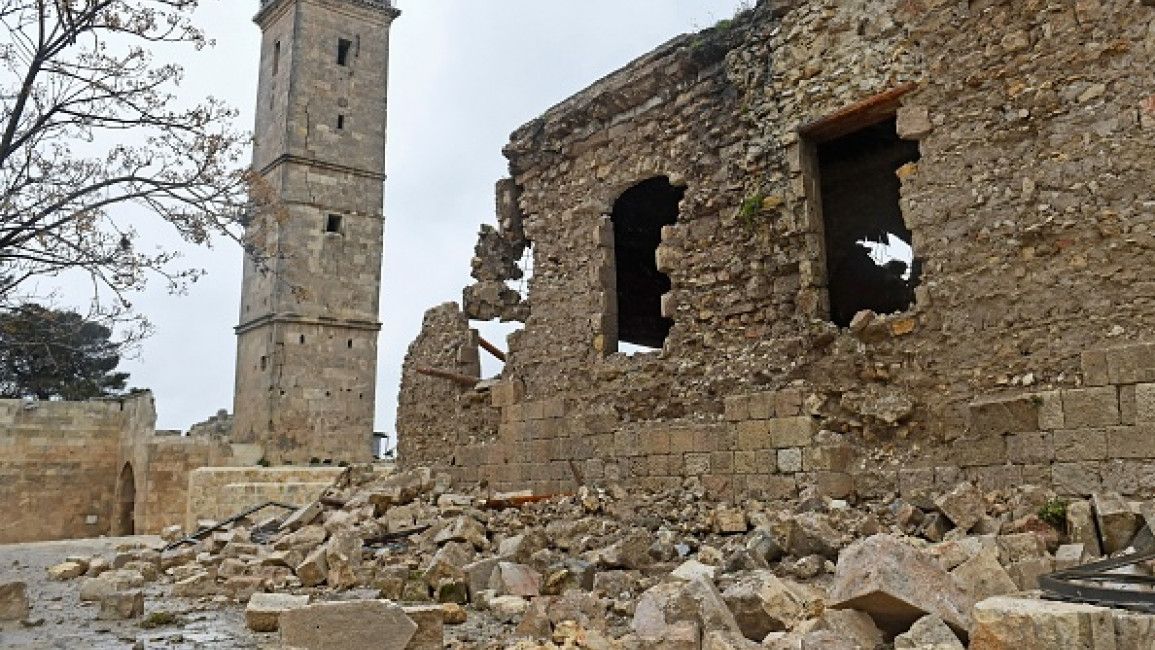Ancient castles, mosques, monuments crumble in Syria, Turkey earthquakes
Roman-era castles, Ottoman mosques and neolithic monuments have been weakened or destroyed by a series of earthquakes that struck Syria and southern Turkey on Monday.
More than 5,000 have died and the toll continues to climb as first responders try to save as many people as possible from the rubble of the thousands of buildings that collapsed in the earthquakes.
UNESCO has said that at least three World Heritage sites have been affected by the quakes - though that number is expected to rise as the scale of architectural loss is uncovered.
Structures dating back over 2,000 years have been damaged or destroyed, and UNESCO and other organisations are mobilising experts in restoration and preservation to assess the destruction.
Aleppo Citadel
Aleppo’s citadel, already worn down by over a decade of civil war, was particularly badly struck by Monday's multiple seismic shocks.
"Significant damage has been noted in the citadel. The western tower of the old city wall has collapsed and several buildings in the souks have been weakened," UNESCO said in a statement.
Aleppo was Syria's pre-war commercial hub and is considered one of the world's longest-continuously inhabited cities, boasting markets, mosques, caravanserais, and public baths. But a brutal siege imposed on rebels by government forces left it badly scarred.
Syria: Aleppo's ancient citadel damaged in earthquake.
— Annu Kaushik (@AnnuKaushik253) February 6, 2023
📸AFP#syriaearthquake #AleppoEarthquake #Turkey pic.twitter.com/zLVaPRlk3O
Photographs show damage to the castle's military towers dating back to the Mamluk period, as well as the minaret of the Ayubbid mosque inside the citadel.
Aleppo lost much of its famous Umayyad mosque in 2012 in heavy bombardment from the Assad regime in the early days of the civil war.
The New Arab contacted the Syrian government’s Directorate-General of Antiquities and Museums for comment on the damage but did not receive a response.
Gaziantep Castle
The Roman-era castle in Gaziantep, considered one of the best-preserved citadels in Turkey, was greatly damaged during the quakes. Images show that damage to battlements and walls caused debris to cascade down the side of the fort.
2,200 years old Gazintap Castle destroyed by the earthquake in Turkey.
— Xavi Ruiz (@xruiztru) February 6, 2023
Before vs Now. pic.twitter.com/vAtIWhmlsA
Very little of the military fort - which was originally built as an observation post by the Hittites and later renovated by Byzantine Emperor Justinian I - remains standing, from images circulating on social media.
Gobekli Tepe
UNESCO has also raised the alarm over the safety of Gobekli Tepe, one of the world's most significant archaeological sites, which is located close to the epicentre of the earthquake.
One of the world’s earliest known temples, the nearly 10,000-year-old Gobekli Tepe attracted over 850,000 visitors in 2022.
Little is yet known about the condition of the ancient underground structures that have been part of a restoration project by the Turkish state in recent years, but experts say that their subterranean location may have provided some protection.
Ficam algumas imagens de Gobekli Tepe, hoje em dia: pic.twitter.com/v1Qglzb4z5
— Cirrus Minor (@EusebioCirrus) February 6, 2023
UNESCO is also concerned about the Nemrut Dag site, and the neo-Hittite archaeological site of Arslantepe outside Malatya, a Turkish city also badly hit by the earthquake.
As wet weather and chaos caused by the quake continue to disrupt access to isolated areas, more devastation to Syria and Turkey’s architectural heritage may be discovered in the coming days.
Agencies contributed to this report



